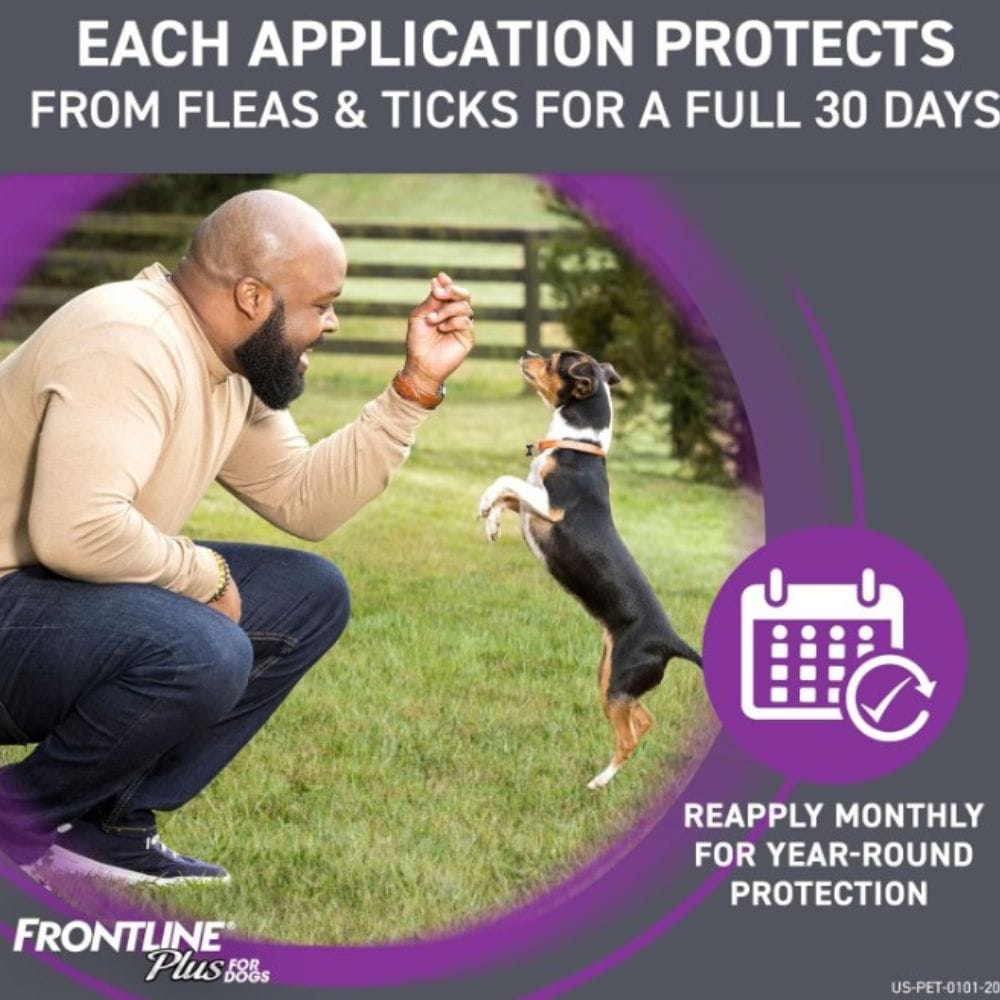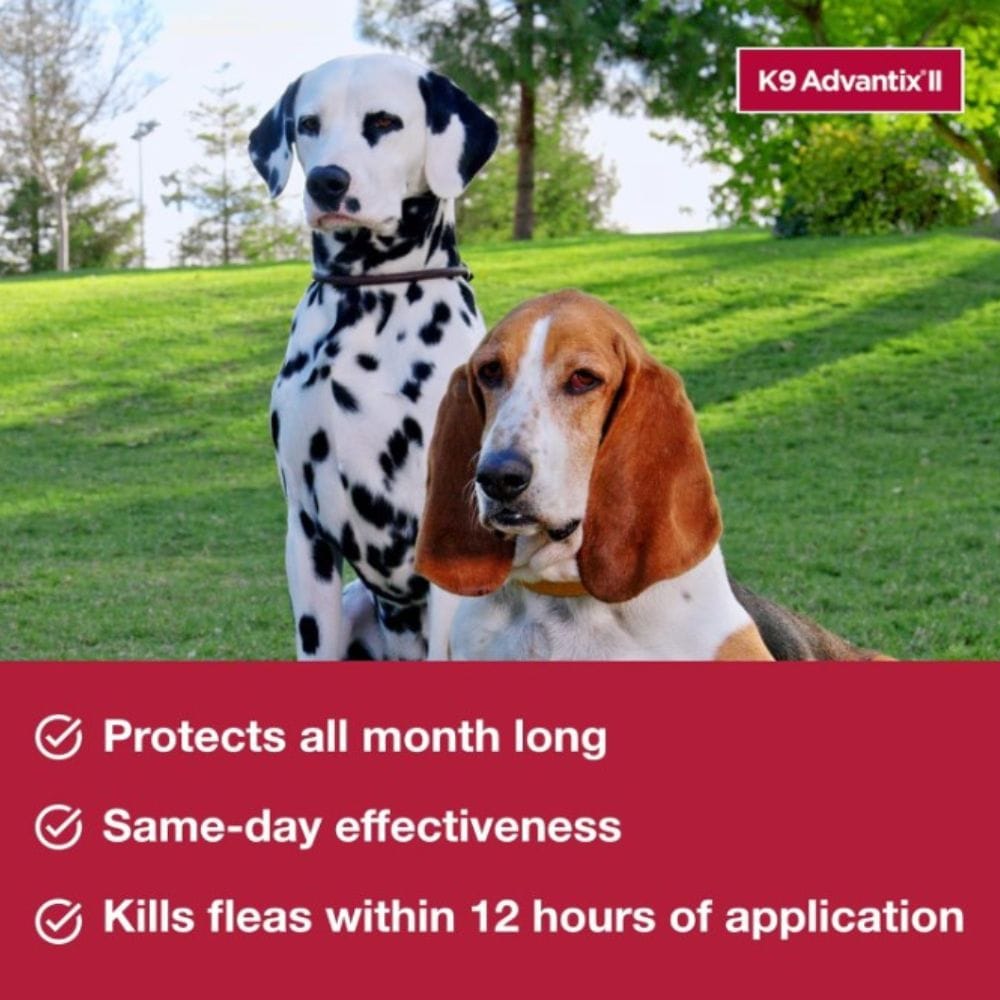Tick-Tock: It's Flea & Tick O'Clock – Keeping Your Dog Bug-Free This Season

Ticks and fleas are more than just pesky nuisances for dogs—they can pose serious health risks to our beloved pets. These tiny parasites can lead to discomfort, itching, and potentially severe medical issues such as Lyme disease and flea allergy dermatitis.
Understanding how to protect your dog from these threats is crucial for their overall well-being. In this blog post, we'll explore the dangers ticks and fleas present, how to recognize the signs of an infestation and the best practices for keeping your furry friend safe and healthy year-round.
How We Chose The Best
We read through 1000's of Amazon reviews to find the best dog splash pads. We only selected products with 4 or 5 stars and have been reviewed by dozens of people.
PawProven is impartial and is not affiliated with any brands or organizations. Links to Amazon are affiliate links and may result in a small commission on the purchase – at no additional expense to you.
Key Takeaways:
- Fleas and ticks pose significant health risks to dogs, including skin irritation and serious diseases.
- Preventative measures and treatments are essential to protect your dog during peak flea and tick seasons.
- Regular grooming and environmental control can significantly reduce the risk of infestations.
Understanding Fleas and Ticks
Fleas and ticks are more than just a nuisance; they can cause severe health issues for your furry friend. Fleas are tiny, wingless insects that feed on your dog's blood, leading to itching, skin infections, and even anemia in severe cases. Ticks, on the other hand, are arachnids that attach themselves to your dog's skin, potentially transmitting diseases like Lyme disease and Rocky Mountain spotted fever.
The peak season for fleas and ticks typically spans from spring to early fall, but these pests can be a year-round problem in warmer climates. Understanding the life cycle of these parasites is crucial for effective prevention and treatment. Fleas can lay up to 50 eggs per day, which can fall off your dog and infest your home. Ticks go through four life stages—egg, larva, nymph, and adult—each requiring a blood meal to progress to the next stage.
Health Risks Associated with Fleas and Ticks
Fleas and ticks are not just annoying; they can pose serious health risks to your dog. Flea bites can cause allergic reactions, leading to intense itching and secondary skin infections. In severe infestations, fleas can cause anemia, especially in puppies and older dogs. Ticks are even more dangerous as they can transmit a variety of diseases. Lyme disease, for instance, can cause fever, lethargy, and joint pain, while Rocky Mountain spotted fever can be fatal if not treated promptly.
Moreover, both fleas and ticks can carry tapeworms, which can infect your dog if they ingest an infected flea or tick. Tapeworms can cause weight loss, diarrhea, and other gastrointestinal issues. Therefore, it's essential to take proactive measures to protect your dog from these parasites, especially during peak seasons.
Preventative Measures
Preventing flea and tick infestations is far easier than treating them. One of the most effective ways to protect your dog is through preventative medications. These can come in various forms, including topical treatments, oral medications, and collars. Topical treatments are applied directly to your dog's skin and can protect for up to a month. Oral medications are usually given once a month and work by killing fleas and ticks when they bite your dog. Flea and tick collars can provide long-lasting protection, often up to eight months.
In addition to medications, regular grooming is essential. Brushing your dog regularly can help you spot fleas and ticks early before they become a significant problem. Bathing your dog with flea and tick shampoo can also help kill any parasites on their skin. It's also crucial to keep your dog's living environment clean. Vacuuming regularly and washing your dog's bedding can help eliminate flea eggs and larvae, reducing the risk of an infestation.
Environmental Control
Controlling the environment is another critical aspect of preventing flea and tick infestations. Fleas and ticks thrive in warm, humid environments, so keeping your home and yard clean and dry can help deter these pests. Regularly mowing your lawn and trimming bushes can reduce the number of places where ticks can hide. Using yard sprays and treatments can also help kill fleas and ticks in your outdoor environment.
Inside your home, vacuuming regularly can help remove flea eggs and larvae from carpets and furniture. Washing your dog's bedding and toys in hot water can also kill any fleas or ticks that may be hiding there. If you have a severe infestation, it may be necessary to use a flea bomb or hire a professional exterminator to treat your home.
Treatment Options
If your dog does get infested with fleas or ticks, prompt treatment is essential. There are various treatment options available, including over-the-counter and prescription medications. Topical treatments and oral medications can kill fleas and ticks quickly, providing relief for your dog. In severe cases, your vet may recommend a combination of treatments to ensure all parasites are eliminated.
In addition to medications, you may need to treat your home and yard to prevent re-infestation. Washing your dog's bedding and toys, vacuuming regularly, and using flea sprays can help eliminate any remaining fleas and ticks. It's also essential to check your dog regularly for signs of fleas and ticks, especially during peak seasons.
Summary
Fleas and ticks are more than just a nuisance; they can pose serious health risks to your dog. Understanding the life cycle of these parasites and the health risks they pose is crucial for effective prevention and treatment. Preventative measures, such as medications and regular grooming, can help protect your dog from infestations. Environmental control, including keeping your home and yard clean, is also essential. If your dog does get infested, prompt treatment is necessary to ensure their health and well-being.
FAQ
- How often should I check my dog for fleas and ticks?
It's advisable to check your dog for fleas and ticks at least once a week, especially during peak seasons. Regular grooming can help you spot any parasites early before they become a significant problem.
- What are the signs of a flea or tick infestation?
Common signs of a flea or tick infestation include excessive scratching, red or irritated skin, and visible parasites on your dog's skin. If you notice any of these signs, it's essential to take action promptly to prevent further health issues.
- Can fleas and ticks affect humans?
Yes, fleas and ticks can also affect humans. Fleas can cause itchy bites, while ticks can transmit diseases such as Lyme disease. Therefore, it's crucial to take preventative measures to protect both your pets and your family from these parasites.
Best Selling Flea and Tick Medications for Dogs
Key Takeaways:
- Effective flea and tick control is crucial for your dog's health.
- Top-selling medications offer various forms and benefits.
- Consulting your vet ensures the best choice for your pet.
Introduction
Fleas and ticks are more than just a nuisance; they can pose serious health risks to your furry friend. From causing skin irritations to transmitting diseases, these tiny pests can wreak havoc on your dog's well-being. Thankfully, the market is brimming with effective flea and tick medications designed to keep your dog safe and comfortable. Let's dive into the best-selling flea and tick medications for dogs, exploring their benefits, usage, and why they stand out.
Understanding Flea and Tick Medications
Flea and tick medications come in various forms, including topical treatments, oral medications, and collars. Each type has its own set of advantages and is suited for different needs and preferences. Topical treatments are applied directly to your dog's skin, usually between the shoulder blades, and offer protection for up to a month. Oral medications, on the other hand, are ingested and work from the inside out, often providing longer-lasting protection. Collars are another popular option, releasing active ingredients over time to keep pests at bay.
Choosing the right medication depends on several factors, including your dog's age, weight, health status, and lifestyle. For instance, if your dog loves swimming, a waterproof topical treatment or an oral medication might be more suitable than a collar. Consulting your veterinarian can help you make an informed decision tailored to your dog's specific needs.
- Frontline Plus: A Trusted Name
Frontline Plus is a household name when it comes to flea and tick control. This topical treatment is known for its effectiveness in killing fleas, ticks, and lice. It contains two active ingredients: fipronil and (S)-methoprene. Fipronil targets adult fleas and ticks, while (S)-methoprene disrupts the life cycle of fleas by preventing the development of eggs and larvae.
One of the standout features of Frontline Plus is its fast-acting formula. Within 24 hours of application, it starts killing fleas, providing quick relief for your dog. Additionally, it remains effective for up to 30 days, making it a convenient monthly treatment. Frontline Plus is also waterproof, so you don't have to worry about it losing its efficacy if your dog gets wet.
- Seresto: Long-Lasting Protection
Seresto is a flea and tick collar that offers long-lasting protection for up to eight months. This collar releases a low dose of active ingredients—imidacloprid and flumethrin—over time, ensuring continuous protection. The collar is odorless and non-greasy, making it a comfortable option for your dog.
One of the major advantages of Seresto is its longevity. Unlike monthly treatments, you only need to replace the collar every eight months, which can be more convenient for busy pet owners. Additionally, Seresto is water-resistant, so it remains effective even if your dog gets wet. This makes it an excellent choice for dogs who love to swim or play in the rain.
3. Advantix II: Broad-Spectrum Protection
Advantix II is a topical treatment that offers broad-spectrum protection against fleas, ticks, mosquitoes, and lice. It contains three active ingredients: imidacloprid, permethrin, and pyriproxyfen. Imidacloprid and permethrin kill adult fleas and ticks, while pyriproxyfen prevents the development of flea eggs and larvae.
One of the standout features of Advantix II is its ability to repel and kill mosquitoes, which can transmit heartworm disease. This makes it a comprehensive solution for protecting your dog from multiple pests. Advantix II is also waterproof, so it remains effective even after bathing or swimming. However, it's important to note that this product is not suitable for cats, so it should be used with caution in multi-pet households.
Summary
Choosing the right flea and tick medication for your dog is crucial for their health and well-being. From topical treatments to oral medications and collars, there are various options available to suit different needs and preferences. Each of these products offers unique benefits and features, making it easier to find the right solution for your furry friend. Always consult your veterinarian to ensure you choose the best option for your dog's specific needs.
FAQ
1. How do I choose the right flea and tick medication for my dog?
Choosing the right flea and tick medication depends on several factors, including your dog's age, weight, health status, and lifestyle. Consulting your veterinarian can help you make an informed decision tailored to your dog's specific needs.
2. Can I use flea and tick medications on puppies?
Yes, many flea and tick medications are safe for puppies, but it's important to check the product label for age and weight restrictions. Always consult your veterinarian before using any medication on puppies.
3. Are flea and tick collars effective?
Yes, flea and tick collars can be effective in providing long-lasting protection. Products like Seresto offer up to eight months of protection, making them a convenient option for pet owners. However, it's important to choose a collar that is suitable for your dog's size and weight.




